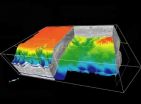June 03, 2011 (Press-News.org) The American Academy of Pediatrics recently released new recommendations for infants riding in child safety seats. The group announced that infants should ride in rear-facing car seats for as long as possible. Previously, children could ride in forward-facing seats after their first birthday.
The group relied on a University of Virginia study indicating that small children are 75 percent less likely to die or suffer severe injuries in a car crash if they are facing the rear of the vehicle. Dr. Dennis R. Durbin, scientific co-director of the Center for Injury Research and Prevention at the Children's Hospital of Philadelphia explained to the New York Times that a child's body is better supported by the shell of the car seat. The shoulders and trunk may be well restrained when the child is facing forward, but the head and neck can fly forward in a crash. This can violently shake the child's head and neck, causing severe injuries. Rear-facing seats can distribute the force of a crash over the child's entire body.
Previously, rear facing car seats did not accommodate children weighing more than 20 pounds. Now parents have several options for car seats as their children grow. Convertible and 3-in-1 seats allow infants and toddlers to stay in safer positions until they are big enough to sit in child booster seats. Most can handle children up to 30 pounds. The NHTSA recommends that small children should stay in rear facing seats until they exceed the limits imposed by the manufacturer.
The National Center for Statistics and Analysis reports that 250,000 children are injured each year in car accidents. Children represent only five percent of car crash deaths, but car accidents are the leading cause of death for children ages 2-14.
Changing the car seat position represents a growth milestone for parents. While this is traditionally for one-year-olds, parents welcome the new safety advice and will adjust accordingly.
Article provided by Derzon & Menard, S.C.
Visit us at www.derzonmenard.com
Pediatrics Group Announces New Guidelines for Child Safety Seats
The American Academy of Pediatrics recently released new recommendations for infants riding in child safety seats.
2011-06-03
ELSE PRESS RELEASES FROM THIS DATE:
UF researchers suggest cholera vaccination strategies for Zimbabwe
2011-06-03
GAINESVILLE, Fla. — Mathematical models analyzing how a cholera outbreak spread in Zimbabwe are providing new insights into the most effective vaccination strategies for preventing future cholera epidemics, according to University of Florida researchers.
The mathematical models employed to analyze a large cholera outbreak in Zimbabwe in 2008-2009 suggest that mass vaccinations deployed strategically could prevent future cholera epidemics in that country and others.
The researchers' findings, published online in late April in the Proceedings of the National Academy of ...
Recent financial crisis rooted in politics of creditworthiness, new study contends
2011-06-03
WASHINGTON, DC, June 2, 2011 — A common reading of the recent subprime mortgage crisis pins the blame on bankers and loan brokers who extended mortgages to those who could not afford them, thereby inflating a housing bubble that was destined to burst.
While technically correct, that reading ignores the "politics of creditworthiness" that undergirded the rise of subprime mortgages, as explained in a new article in the June issue of the American Sociological Review by Simone Polillo, an assistant professor of sociology in the University of Virginia's College of Arts & ...
Will neuroscience challenge the legal concept of criminal responsibility?
2011-06-03
Just before 10:00 a.m. on June 20, 2001, a uniformed police officer was dispatched to do what he thought was a routine welfare check at a home in Houston, Texas. When the officer met Andrea Yates at the door, she immediately told him, "I just killed my kids." When Yates was later asked why she drowned her five children, she claimed she had to in order to save them from hell. The police would learn that Yates had been suffering from long-term post-partum depression and psychosis.
Nearly 10 years after Andrea Yates killed her five children, the case remains hotly debated ...
Combination therapy shows promise for rare, deadly cancer caused by asbestos
2011-06-03
Philadelphia – Pleural mesothelioma patients who undergo lung-sparing surgery in combination with photodynamic therapy (PDT) show superior overall survival than patient treated using the conventional therapy of extrapleural pneumonectomy (EPP) (or en bloc removal of the lung and surrounding tissue) with PDT, indicates new research from the Raymond and Ruth Perelman School of Medicine at the University of Pennsylvania. The research is published in the June 2011 issue of the Annals of Thoracic Surgery.
"Unlike patients who receive traditional lung sacrificing surgery for ...
Defective Clip-On Table-Top Baby Chairs
2011-06-03
On May 6, 2011, the U.S. Consumer Product Safety Commission (CPSC) issued an "urgent warning" about the "Me Too" Clip-On Table Top Baby Chairs (imported by phil&teds USA Inc.). The CPSC has determined that this baby chair poses a risk of serious injury to children. The CPSC strongly urges all consumers to stop using the chairs immediately. See http://www.youtube.com/watch?v=hC0B_k0nTlw for the CPSC's 2-minute video announcement and warning.
The chair consists of a nylon seat with a metal frame that clamps onto a table edge using two metal vise ...
Climate projections don't accurately reflect soil carbon release
2011-06-03
CORVALLIS, Ore. – A new study concludes that models may be predicting releases of atmospheric carbon dioxide that are either too high or too low, depending on the region, because they don't adequately reflect variable temperatures that can affect the amount of carbon released from soil.
The study points out that many global models make estimates of greenhouse gas emissions from soils based on "average" projected temperatures. But temperatures vary widely from those averages. That variability, along with complex biological processes, makes the issue far more complicated.
Researchers ...
Is the description-experience gap in risky choice limited to rare events?
2011-06-03
Psychology researchers at the University of Alberta have found an interesting wrinkle in the decision- making process people use when gambling: People confronted with risky choices respond differently when they rely on past experiences, rather than when they just focus on the odds of winning or losing.
The research team gave people two kinds of choices. One was a choice between a sure win versus a double-or-nothing win. The other choice was between a sure loss versus a double-or- nothing loss. In some cases the odds were explained to the volunteer gamblers, and sometimes ...
Color red increases the speed and strength of reactions
2011-06-03
What links speed, power, and the color red? Hint: it's not a sports car.
It's your muscles.
A new study, published in the latest issue of the journal Emotion, finds that when humans see red, their reactions become both faster and more forceful. And people are unaware of the color's intensifying effect.
The findings may have applications for sporting and other activities in which a brief burst of strength and speed is needed, such as weightlifting. But the authors caution that the color energy boost is likely short-lived.
"Red enhances our physical reactions because ...
Federal Tort Reform Bill Would Cap Medical Malpractice Awards
2011-06-03
Everyone has heard horrific tales of medical negligence -- the healthy body part removed instead of the cancerous one, the adult dose of medication given to a child, the baby starting life with a permanent birth injury because someone made a mistake, the grandparent who dies from a hospital infection.
In our legal system, a person hurt through the negligence of another can sue in court for money damages for the harm received. In most scenarios, a jury decides how much money would compensate a victim for his or her injury at the negligent or malicious hand of another.
It ...
This is what the margins of the Ebro looked like 6 million years ago
2011-06-03
A Spanish research team, using 3D reflection seismology, has for the first time mapped the geomorphological features of the Ebro river basin between five and six million years ago. The images obtained show that the surface analysed is today 2.5 or 3 kilometres below the sea bed.
"The results shed light on the way in which the sea level fell during the Messinian (between 5.33 and 6 million years ago), and imply that the subsequent inundation of the river margins happened extremely quickly", Roger Urgeles, lead author of the study and a researcher at the Department of Marine ...
LAST 30 PRESS RELEASES:
Making lighter work of calculating fluid and heat flow
Normalizing blood sugar can halve heart attack risk
Lowering blood sugar cuts heart attack risk in people with prediabetes
Study links genetic variants to risk of blinding eye disease in premature infants
Non-opioid ‘pain sponge’ therapy halts cartilage degeneration and relieves chronic pain
AI can pick up cultural values by mimicking how kids learn
China’s ecological redlines offer fast track to 30 x 30 global conservation goal
Invisible indoor threats: emerging household contaminants and their growing risks to human health
Adding antibody treatment to chemo boosts outcomes for children with rare cancer
Germline pathogenic variants among women without a history of breast cancer
Tanning beds triple melanoma risk, potentially causing broad DNA damage
Unique bond identified as key to viral infection speed
Indoor tanning makes youthful skin much older on a genetic level
Mouse model sheds new light on the causes and potential solutions to human GI problems linked to muscular dystrophy
The Journal of Nuclear Medicine ahead-of-print tip sheet: December 12, 2025
Smarter tools for peering into the microscopic world
Applications open for funding to conduct research in the Kinsey Institute archives
Global measure underestimates the severity of food insecurity
Child survivors of critical illness are missing out on timely follow up care
Risk-based vs annual breast cancer screening / the WISDOM randomized clinical trial
University of Toronto launches Electric Vehicle Innovation Ontario to accelerate advanced EV technologies and build Canada’s innovation advantage
Early relapse predicts poor outcomes in aggressive blood cancer
American College of Lifestyle Medicine applauds two CMS models aligned with lifestyle medicine practice and reimbursement
Clinical trial finds cannabis use not a barrier to quitting nicotine vaping
Supplemental nutrition assistance program policies and food insecurity
Switching immune cells to “night mode” could limit damage after a heart attack, study suggests
URI-based Global RIghts Project report spotlights continued troubling trends in worldwide inhumane treatment
Neutrophils are less aggressive at night, explaining why nighttime heart attacks cause less damage than daytime events
Menopausal hormone therapy may not pose breast cancer risk for women with BRCA mutations
Mobile health tool may improve quality of life for adolescent and young adult breast cancer survivors
[Press-News.org] Pediatrics Group Announces New Guidelines for Child Safety SeatsThe American Academy of Pediatrics recently released new recommendations for infants riding in child safety seats.

